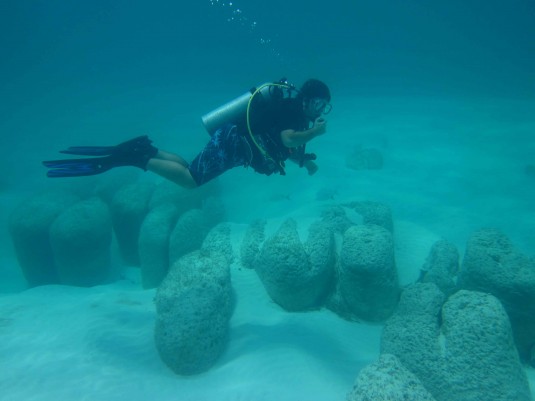© 1999 Ken Glasziou
© 1999 The Brotherhood of Man Library
| Hear Ye! Hear Ye! All Harbingers of Hope, Keepers of the Copyright, and Protectors of an Inviolate Text, hear this | Volume 6 - No. 2 — Index | Cosmic Reflections. Oops!! |
The description in the Urantia Papers telling how, 550 million years ago, the Life Carriers brought life to this planet causes problems for many readers, both new and old, who come across statements from scientific sources stating that life has been on this planet for in excess of 3 billion years.
In this article I have attempted to throw light on the various possibilities for reconciling the information in the Urantia Papers and the evidence now being pieced together by our scientists, and to show how the findings of science have increasingly converged with what is stated in the Papers.
To make sense of the Urantia Papers’ presentation, several things are essential. One is appreciation of the different aims and purposes of the scientist and the revelators. In Section 5 of Paper 101, the revelators state, “Science deals with facts; religion is concerned only with values.” We need to remember that factual truths of a materialistic nature that are so important to science and for history, nevertheless have little or no spiritual value.
A major concern of the authors of the Urantia Papers appears to have been to provide us with a synthesis of “the apparently divergent sciences of nature and the theology of religion into a consistent and logical universe philosophy.” (UB 101:2.1) The authors had to do this within the bounds of restrictions imposed by the rules on revelation. These are covered in Section 4 of Paper 101, and need to be read with a critical and unbiased mind. One such restriction proscribes impartation of unearned or premature knowledge, but this is a restriction that is qualified by permission being given to the authors to impart key information when considered essential.
In providing us with a revelation that will achieve its purposes, the revelators were required to balance themselves on a knife edge, with the balance point adjusted, not in the direction of scientific fact, but on universe values. Wherever there was conflict, they give “value,” not “fact,” the priority. And, except in special circumstances, the science component had to remain anchored at the level of knowledge available to us humans prior to the mid-1930’s.
The story in the Urantia Papers of the origin of life is a mixture of both science and history, intermingled so as to contribute to the “universe frame” in which we think[1]. [“Partial, incomplete, and evolving intellects would be helpless in the master universe, would be unable to form the first rational thought pattern, were it not for the innate ability of all mind, high or low, to form a universe frame in which to think.” (UB 115:1.1)]
This story is meant to endow us with a concept of how and why we came to be on this planet. It is not meant to be a collection of scientific “facts” by which lay people might impress others with their accurate advance knowledge of planetary history, nor is it meant to be an infallible science text for correcting the errors that scientists may make in their search for truth.
As with other stories in the Papers, the story of life’s origins is there to help each of us to formulate our own personal “universe frame.” My guess is that our “frame” will remain personal—and erroneous to some degree— even up to the time we attain Paradise. Thus the expectation that an infallible “universe frame” has been provided by the revelators in the Urantia Papers would be unrealistic. Now to the story itself.
The Papers tell us that 550 million years ago, the Life Carriers returned to Urantia to initiate the original life patterns of this world and to implant them in the hospitable waters of the realm. (UB 58:4.2) A requirement was that this life plasm would contain “the full potential for all future developmental variations and for all subsequent evolutionary changes and modifications.” (UB 36:2.17)
That this “full potential for all future developments” was present in primitive life forms was totally in contrast to long-held human concepts about evolution, both at the time the Papers were received (mid-1930’s) and right up until quite recently. These concepts were forced to change when the reality of the so-called “Cambrian explosion” of 540 million years ago was recognized.
This change in scientific opinion appears to have been catalysed by a re-interpretation of the evidence contained in the remarkable fossil deposits of the Burgess shales in western Canada. One description of the Cambrian explosion states: “In a burst of creativity like nothing before or since, nature appears to have sketched out the blueprints for virtually the whole of the animal kingdom.”
In actuality, the concept that evolution was entirely from the very simple, and then, step by step to the complex was already in trouble, even before the discovery of the “Cambrian explosion.” Geneticists studying mutations in fruit flies had found that genes that control morphogenesis, particularly of limbs, consisted of a bundle of associated genes that together were given the name “homeobox.” DNA experiments with these genes showed that the same kind of controlling homeobox was already present in a range of invertebrates, including even worms, and was also present in higher animals such as the frog. Hence this finding that the system that controls limb development in a frog was also present in worms, was exactly what would be expected if the Urantia Book statement was correct—which is that the life plasm introduced by the Life Carriers already had the full potential for all subsequent development.
This period of changing opinion among geologists was also accompanied by re-assessment of concepts about the first appearance of multicellular organisms. Previously, many believed this to have been in excess of one or even two billion years ago. It is now placed in the region immediately preceding the Cambrian explosion, somewhere between 540 and 560 million years before the present—and consistent with the book’s statement about the qualities of the introduced life plasm.
However, the outstanding problem is the strong evidence for primitive life being present on this planet billions of years ago It remains in need of explanation.
Part of the evidence for the presence of life on Earth so long ago is those unique structures called “stromatolites” that are preserved in fossilized limestone, 3.5 billion years old, at several locations. These structures can still be seen forming in favorable shallow inter-tidal zones and are invariably associated with the activities of photosynthetic cyanobacteria (also known as blue-green algae). Hence it is assumed that the ancient stromatolites were also the result of activities of photosynthetic bacteria. (see Figures 1 and 2)


More evidence for the occurrence of ancient life forms comes from the deposition of certain kinds of sedimentary red sandstone deposits, the red coloration being due to a coating of the sand grains with fully oxidized iron. This process is thought to have been due to the water soluble ferrous form of iron in the seas being used as a recipient for the oxygen formed during photosynthesis by various life forms. The product, the red ferric iron, was insoluble and was deposited on the sand grains. This kind of deposit dates as far back as 2.5 billion years ago.
In later years the deposition of red sedimentary rocks in which the color is due to the ferric form of iron occurred when the oxygen content of the atmosphere rose to levels sufficiently high to trigger oxidation of soluble ferrous iron and the deposition of the insoluble ferric form
The only known process to bring about such high levels of atmospheric oxygen is photosynthesis by living organisms. Many, possibly all, of these deposits date from times prior to 550 million years ago, and again present evidence for the occurrence of life forms that pre-date the introduction of life plasm by the Life Carriers. Further evidence comes from the occurrence of several kinds of microfossils thought to be evidence for bacterial or algal cells.
The Urantia Papers state, “Life does not originate spontaneously but is constructed. . . it appears on the inhabited worlds either by direct importation or as a result of the operation of the Life Carriers.” (UB 36:0.1)
That statement rules out the possibility that some primitive life forms, originating from other inhabited planets, are able to survive in outer space, and, after floating around among the galaxies, they seed new planets when conditions become favorable.
Taken together, the evidence is strong that primitive life forms were present on our planet prior to the introductions made by the Life Carriers 550 million years ago. A possible explanation is that the revelators define what constitutes “life” differently from ourselves. That this maybe so is evidenced by their statement that:
“The material self, the ego entity of human identity, is dependent during the physical life on the continuing function of the material life vehicle, on the continued existence of the unbalanced equilibrium of energies and intellect which, on Urantia, has been given the name life.” (UB 112:2.20)
This statement may imply that the inherent potential to attain “intellect” is definitive of what, for them, constitutes “life.” By this definition, the forms of organism that preceded the Life Carriers’ introductions, can be thought of as “pre-life” forms that were introduced to help prepare the environment, and particularly the atmosphere of our planet, for the implantations that came later. Such a view is consistent with the following statements:
“Life Carriers often carry actual life plasm to a new world, but not always. They sometimes organize the life patterns after arriving. . . in accordance with formulas previously approved. . . Such was the origin of the planetary life of Urantia.” (UB 36:3.2) And “We brought no life to Urantia. Urantia life is unique, original with the planet. This sphere is a life-modification world; all life appearing hereon was formulated right here on the planet.” (UB 58:4.1)
Components of these “pre-life forms” may also have been used by the Life Carriers for their in situ synthesis of the life plasm that had the “full potential for all future developmental variations.”
Other hypotheses are possible. The one presented is consistent with most of the current concepts in science and also with most of the statements in the Papers. However, it would be premature to attempt too much, as there is still an enormous amount to be learned about the genetics and structure of the lower life forms. Some of the required information is now coming from new technologies such as the base sequence analysis for 16S-ribosomal RNA.
Why did the revelators leave us with these strange inconsistencies? Without them, their description of the introduction of life plasm 550 million years ago would appear to gel perfectly with the concept of the “Cambrian explosion,” its dating at 540 million years before the present, and the preceding emergence of multicellular organisms. Probably many of us would then have used this prophetic information as proof positive for us to assert that the Urantia Papers are a revelation having celestial sources. The probable occurrence of “pre-life” organisms prejudices the validity of that assertion.
My personal view, detailed in Innerface International Vol.5 No.7, is that such prophetic material borders on the miraculous to the point that our free will becomes imperiled in a way that is contrary to universe policy—which is the same kind of reason for which Jesus spurned the use of the miraculous to draw attention to himself and his teachings.
¶ External links
| Hear Ye! Hear Ye! All Harbingers of Hope, Keepers of the Copyright, and Protectors of an Inviolate Text, hear this | Volume 6 - No. 2 — Index | Cosmic Reflections. Oops!! |
¶ References
See article “Patience—a millennium is a 1000 years,” (p. 4.) ↩︎